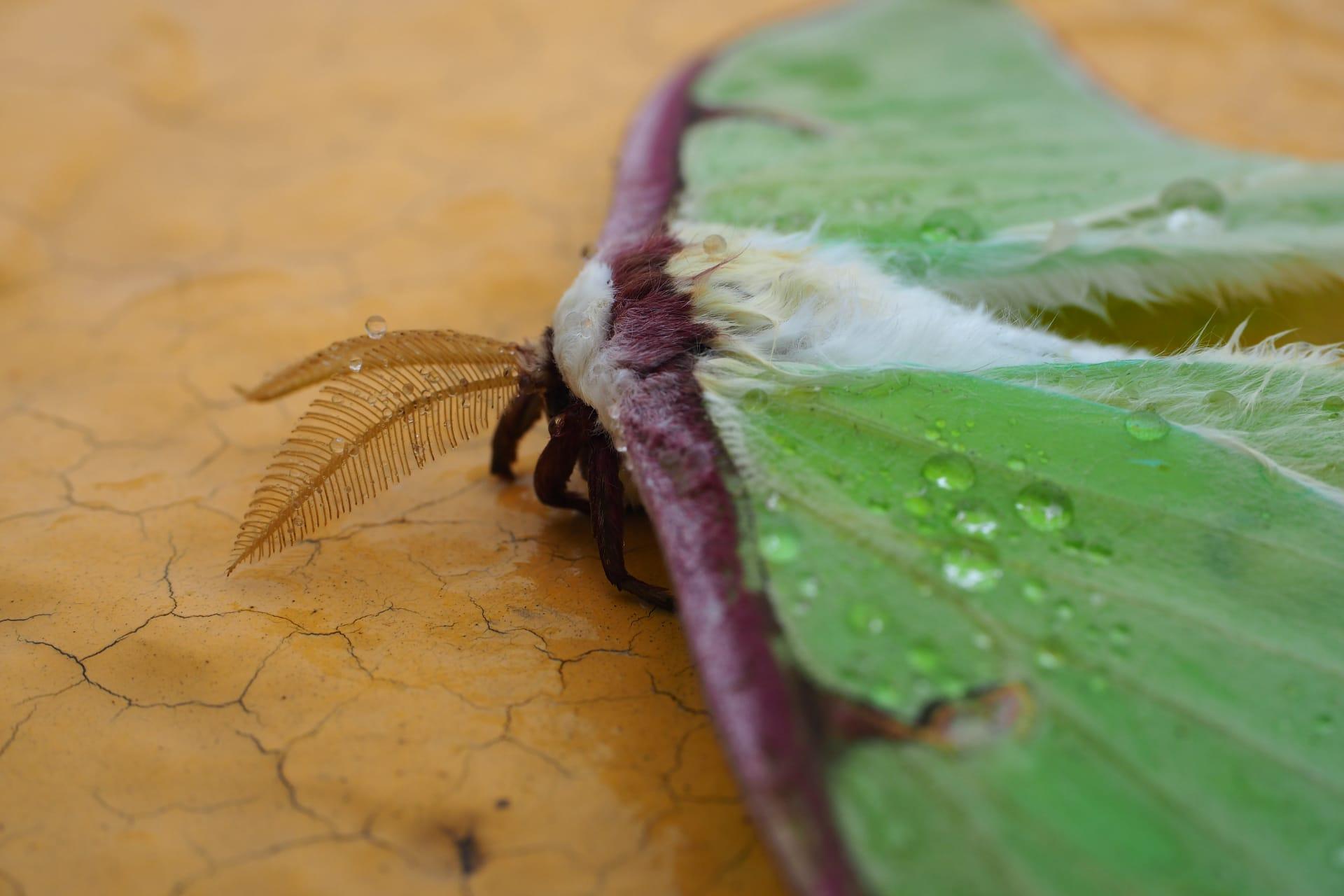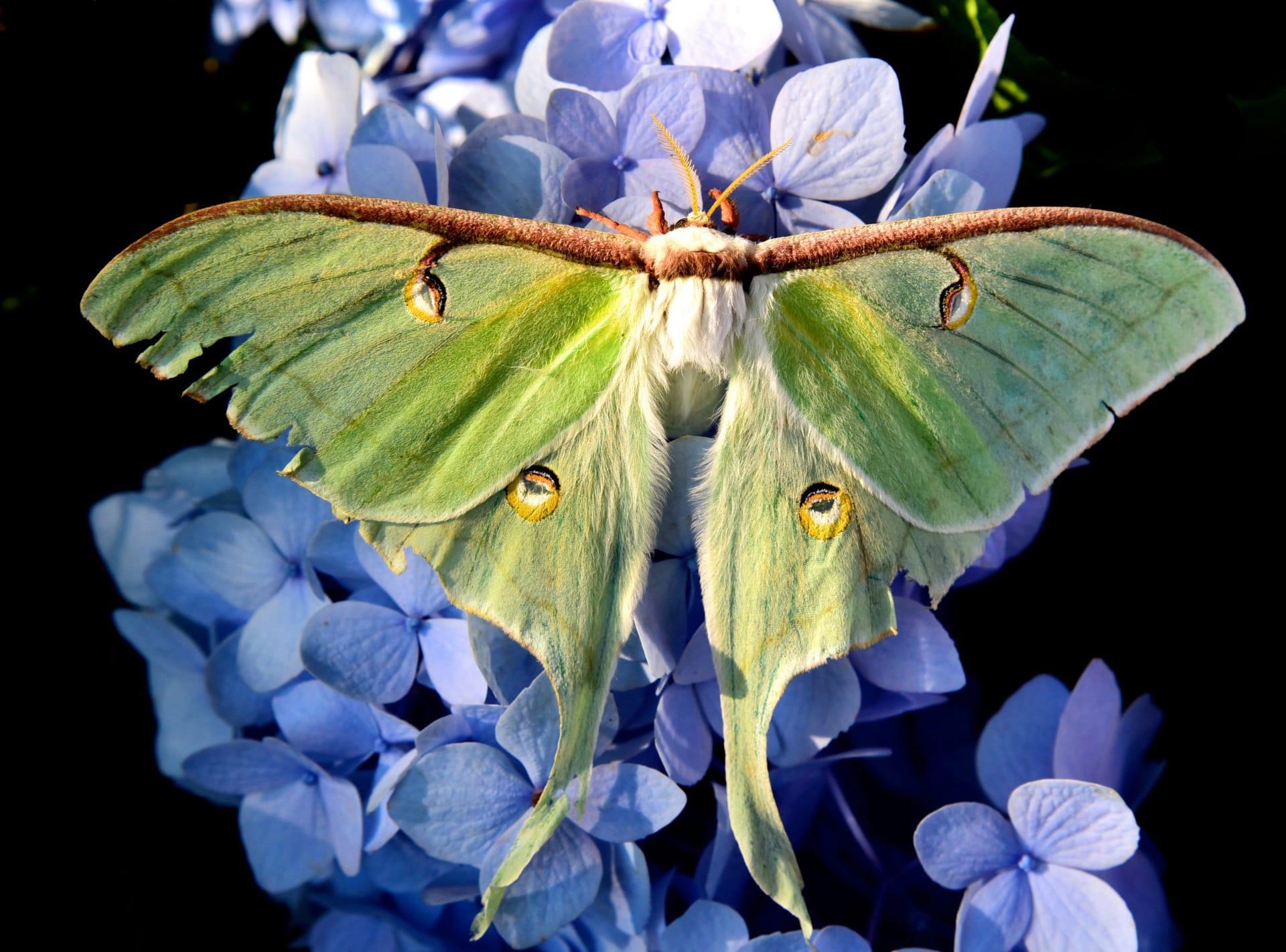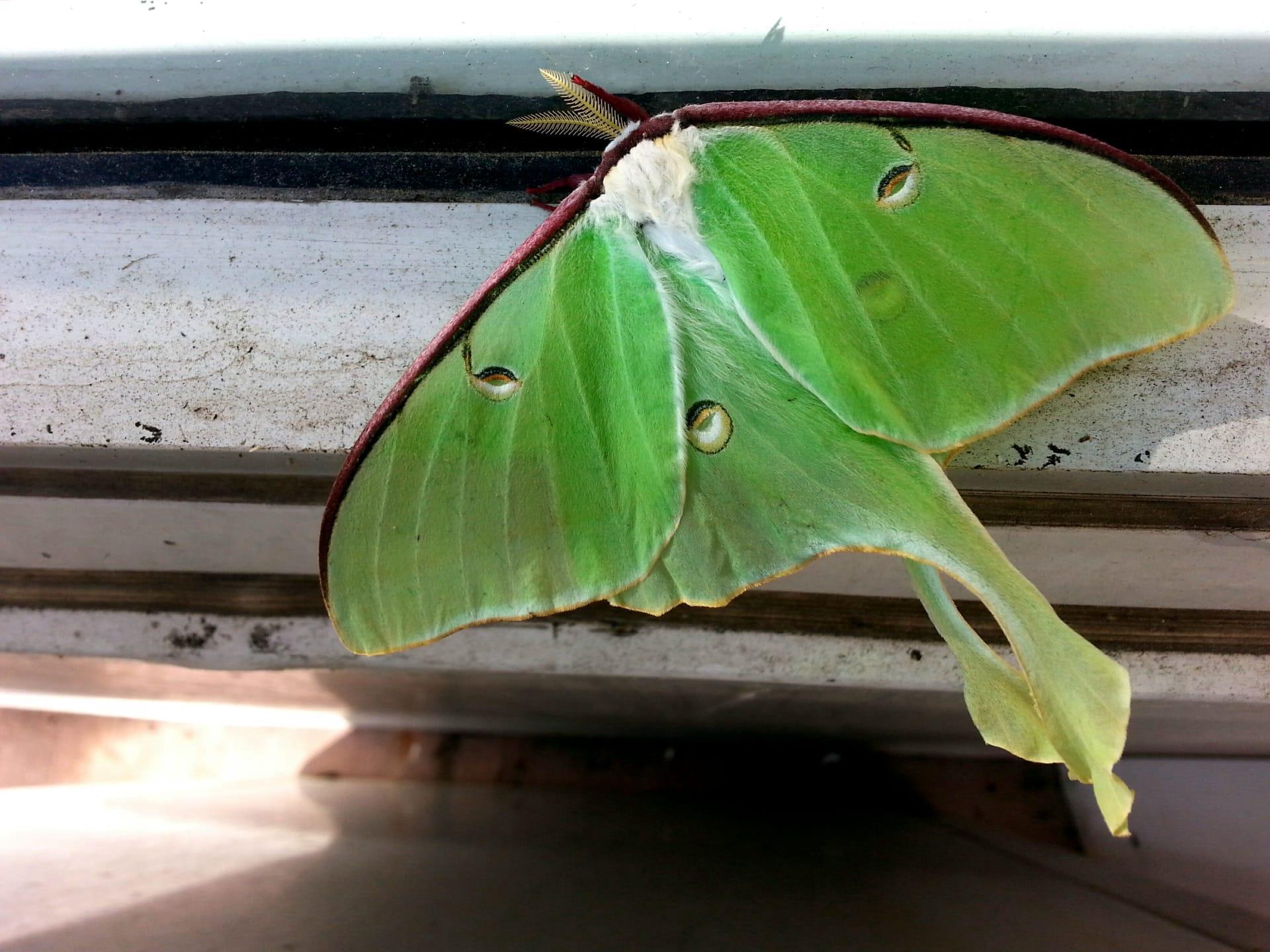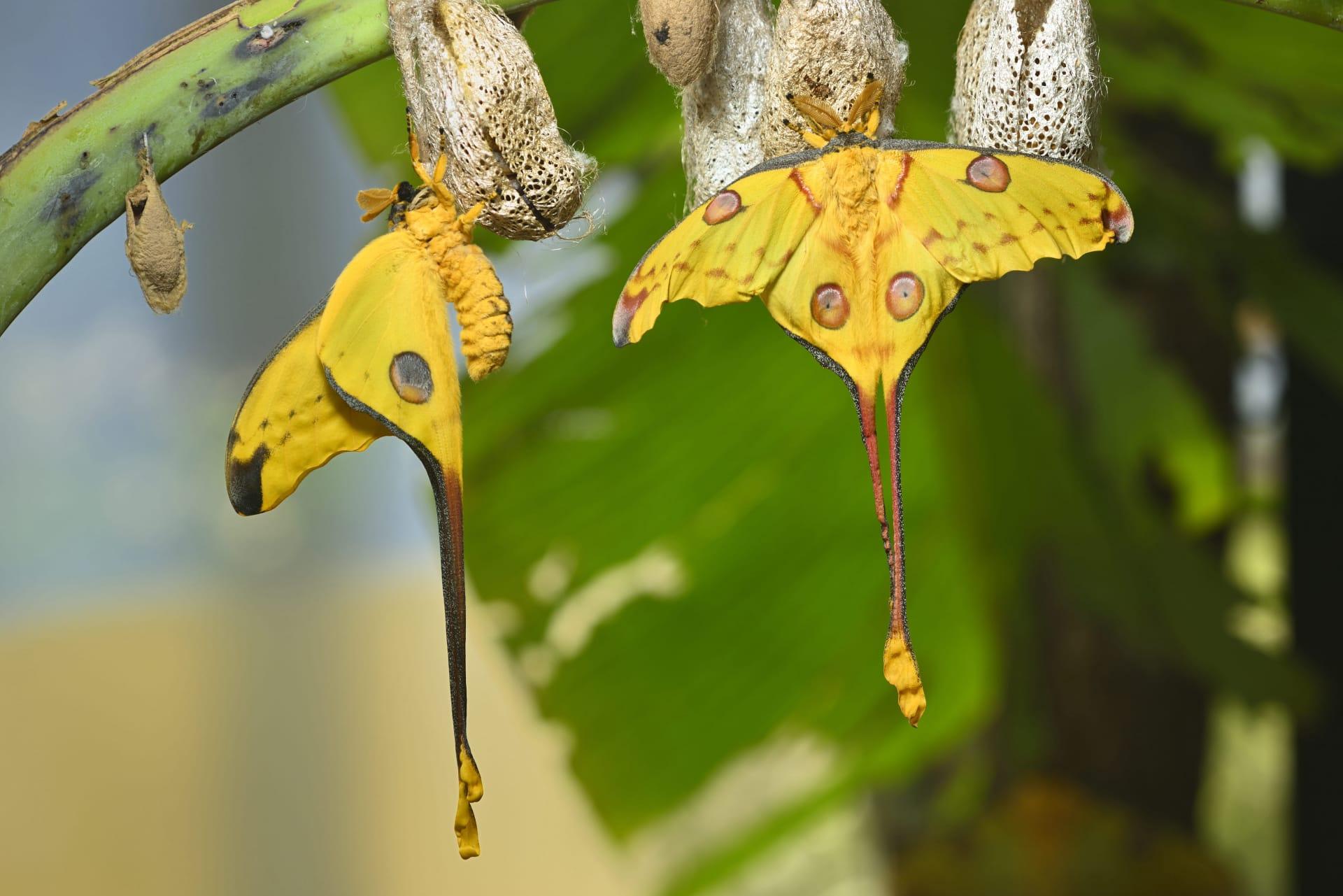1
Luna Moths, scientifically known as Actias luna, are notable for their strikingly large size, with a wingspan ranging from 3 to 4.5 inches (7.6 to 11.4 cm). These moths exhibit a pale green, almost translucent coloration on their wings, which helps them blend into the foliage during the daytime. Not just their size, but their unique color makes them one of the most distinctive moths in North America.
Another fascinating aspect of Luna Moths is their lack of a functioning mouth. Once they emerge as adults from their cocoons, they are unable to eat. This adaptation has evolved because their primary purpose during this stage is to reproduce. As a result, the adult phase of a Luna Moth's life is incredibly short, lasting only about a week. During this time, they focus on mating and laying eggs before their life cycle ends.

2
Luna Moths have a remarkable defense mechanism against predators. Their long, twisted tail extensions can confuse bat sonar, one of their main predators. This adaptation works as a false target, throwing off the bat's echolocation as it attempts to hunt the moth. The twisting tail creates a complex pattern of echoes, misleading the bat and increasing the moth's chance of survival.
Interestingly, Luna Moths are one of the few moth species that make a clicking noise when threatened. This sound is produced by a special structure in their thorax. Scientists believe this clicking sound may serve as a warning signal to predators or could be a way to startle potential threats, buying the moth time to escape.

3
The life cycle of the Luna Moth is fascinating and divided into four distinct stages: egg, larva (caterpillar), pupa (cocoon), and adult. Each stage has unique characteristics. For instance, the caterpillar stage can last up to three weeks, where they feed voraciously on the leaves of host trees like walnut, hickory, and sweet gum. During this time, they can grow up to 2.5 inches (6.4 cm) in length.
After the caterpillar stage, Luna Moths enter the pupa stage, where they weave a cocoon around themselves. This cocoon is typically attached to leaves or branches of trees. The pupa stage is a time of transformation, lasting approximately two weeks. During this phase, the caterpillar metamorphoses into the adult moth, a process that involves a complete reorganization of their body structure.

4
Luna Moths are primarily nocturnal, meaning they are most active during the night. This nocturnal behavior is typical of many moth species and helps them avoid daytime predators. During the day, Luna Moths usually rest in foliage where their green wings provide excellent camouflage. Their nocturnal habits also play a role in their mating rituals, as they use the cover of darkness to find mates.
In terms of distribution, Luna Moths are found throughout Eastern North America, from Florida to Maine and west to eastern Texas and North Dakota. Their presence varies seasonally, with moths typically seen from April to July in the northern part of their range and as early as March in southern regions. This spread demonstrates their adaptability to different climates and habitats.

5
The eggs of Luna Moths are tiny, about the size of a pinhead, and are laid in small groups on the underside of leaves. A female Luna Moth can lay up to 200 eggs during her short lifespan. The eggs hatch in about a week, depending on temperature and humidity conditions.
Another interesting fact about Luna Moths is their symbolic significance in various cultures. In some Native American traditions, they are seen as symbols of transformation and renewal due to their dramatic metamorphosis process. In popular culture, Luna Moths are often associated with moonlight and night beauty, reflecting their ethereal appearance and nocturnal lifestyle. Their unique qualities make them a subject of fascination and inspiration in art, literature, and mythology.